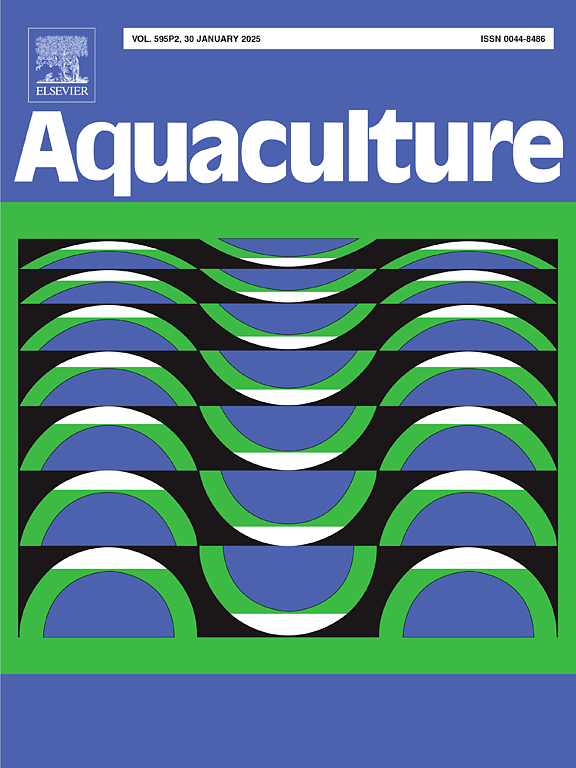IF 3.9
1区 农林科学
Q1 FISHERIES
引用次数: 0
摘要
在鱼类处理过程中使用天然药物作为麻醉剂,旨在最大限度地减少鱼类在生物测量、性别鉴定和运输等处理过程中的应激反应。本研究旨在探究莪术精油(CLEO)对大鳞栉水母(Colossoma macropomum)的行为和心电图特征及其药理作用机制。研究对象为幼鱼(18.13 ± 2.1 g)(n = 153),使用的 CLEO 浓度分别为 125 μL.L-1、150 μL.L-1、175 μL.L-1、200 μL.L-1、250 μL.L-1,分析了麻醉诱导和恢复行为(实验 I)、心电图和呼吸活动(实验 II)以及药效学机制(实验 III)。鱼类在暴露于 CLEO 浓度的情况下达到深度麻醉阶段与浓度有关。然而,在麻醉诱导期间获得的效果是可逆的,无论是在行为参数还是心脏活动方面。在静脉注射氟马西尼 1 毫克/千克后观察其作用机制,发现其对体位反射丧失的抵抗力更强,恢复潜伏期更短。该作用机制表明抑制性 GABA 神经传递参与其中。所使用的浓度对心脏的影响与麻醉相符,但没有出现可能影响鱼类血液动力学的心律失常,这表明氟马西尼可用于巨齿藻的短时麻醉诱导。本文章由计算机程序翻译,如有差异,请以英文原文为准。
Curcuma longa essential oil promotes safe anesthesia involving Gabergica pathway in Amazonian fish
The use of natural agents as anesthetics in fish handling aims to minimize stress during handling procedures, such as biometry, sexing and transportation. This study aims to investigate the behavioral and electrocardiographic characteristics and the pharmacological mechanism of action of Curcuma longa essential oil (CLEO) in Colossoma macropomum. The study was conducted on juvenile Colossoma macropomum (18.13 ± 2.1 g) (n = 153), using CLEO concentrations of 125 μL.L−1, 150 μL.L−1, 175 μL.L−1, 200 μL.L−1, and 250 μL.L−1, analyzing anesthetic induction and recovery behavior (Experiment I), electrocardiogram and respiratory activity (Experiment II) and the pharmacodynamic mechanism (Experiment III). Fish exposed to CLEO concentrations reached a deep anesthesia stage in a concentration-dependent manner. However, the effects obtained during anesthetic induction were reversible, both in behavioral parameters and cardiac activity. The mechanism of action was observed after administration of flumazenil 1 mg/kg i.p., which showed greater resistance to loss of postural reflex and shorter latency for recovery. The mechanism of action indicates involvement of inhibitory GABA neurotransmission. The cardiac effects at the concentrations used were compatible with anesthesia, but no arrhythmias occurred that could compromise the hemodynamics of the fish, demonstrating its safety for short-duration anesthesia induction in Colossoma macropomum.
求助全文
通过发布文献求助,成功后即可免费获取论文全文。
去求助
来源期刊

Aquaculture
农林科学-海洋与淡水生物学
CiteScore
8.60
自引率
17.80%
发文量
1246
审稿时长
56 days
期刊介绍:
Aquaculture is an international journal for the exploration, improvement and management of all freshwater and marine food resources. It publishes novel and innovative research of world-wide interest on farming of aquatic organisms, which includes finfish, mollusks, crustaceans and aquatic plants for human consumption. Research on ornamentals is not a focus of the Journal. Aquaculture only publishes papers with a clear relevance to improving aquaculture practices or a potential application.
 求助内容:
求助内容: 应助结果提醒方式:
应助结果提醒方式:


